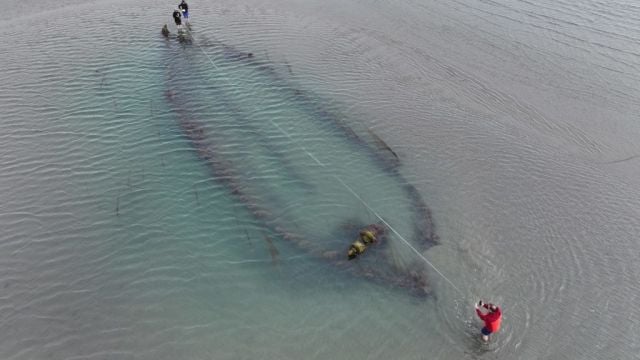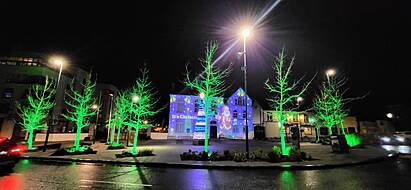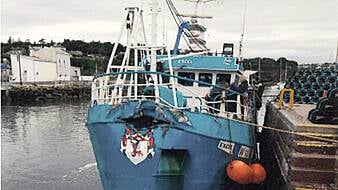Investigations are continuing into shipwrecks found off the Dublin coast which are estimated to date back to the 19th century.
A report was made by local photographer Nigel Motyer who spotted a wreck on the Portmarnock Strand in north Dublin after it became exposed due to a shifting sandbank.
The National Monuments Service (NMS) inspected the wreck and determined that it is possibly the remains of a 19th century fishing trawler.
While this trawler had been documented by the NMS before, the team also discovered three previously undocumented wrecks, which are in the process of being identified.
They also appear to date from the 19th century.
Karl Brady, a senior NMS archaeologist who led the inspection, said prolonged periods of wind from a particular direction moved beach sands and temporarily stripped sand from the southern end of the beach, leading to the wrecks being exposed.
The vessels continue to be analysed to help find answers as to their origin, for example, the size and construction style and whether timber or metal materials were used.
Mr Brady added: “The newly discovered wrecks are poorly preserved due to continuous tidal and storm action over the years.
“In general, while only the lower portions of the hulls and bow areas have survived, our team has identified timber frames, planking, metal knees, and even a metal winch/windlass system at the bow of one of the boats.”
Some 50 wrecks are recorded for the Portmarnock/Baldoyle area in the Wreck Inventory, identified through years of historical and archival research by the NMS.
These range from 14th century trading ships to 20th century coal-boats.
Mr Brady said that because many ships were built in a similar way over the centuries and because no dateable artefacts are likely to be recovered from wrecks like these, 18th and 19th century newspaper articles and specialist maritime sources can help identify the vessels’ stories.
Research by the NMS indicates that most vessels recorded off Portmarnock Strand were lost during bad or stormy weather.
“Several of the ships, en route to Dublin, may have attempted to seek refuge in Howth Harbour during stormy conditions but failed to reach the safety of the harbour entrance and were compelled to run ashore on the strand, a desperate measure to save lives,” Mr Brady said.
“Other ships, originating from ports on the west coast of Britain and bound for various global destinations, seem to have been unfortunate victims of stormy weather, driven ashore at Portmarnock, often at night. There is an unusually high number of wrecks in this location.”
Minister Darragh O’Brien, who visited the site with NMS underwater specialist archaeologists, said it was “a very exciting development”.
“No doubt each of these shipwrecks has an important story to tell and we hope that, in time, we will learn more about them and the roles they have played in shaping our history,” he said.
“With a long-standing maritime legacy to celebrate and record, the important work of the National Monuments Service protects and preserves our underwater heritage, as evidenced by the 18,000 sites recorded in the Wreck Inventory of Ireland Database.”







